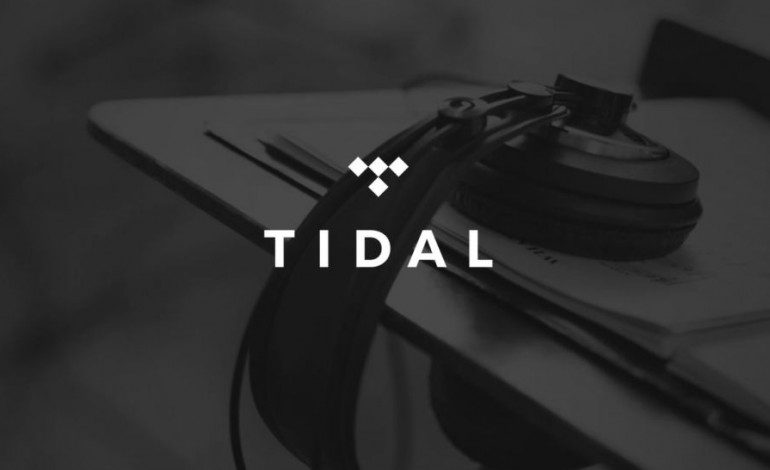

Vania Schlogel, the Chief Investment Officer of Tidal, the new music streaming service connected with Jay-Z, spoke with The Hollywood Reporter to address the company’s PR firestorm, and clarify a series of Tweets written by Jay-Z.
On April 26th, 2015, Jay-Z took to Twitter to take control of a portion of the conversation about Tidal, and he took to the social media platform to vent and clarify points about the state of the company, the media and artistic community backlash, and several misconceptions. According to The Hollywood Reporter, Jay-Z prefaced his flurry of Tweets about Tidal with the following message: “Stream of consciousness coming in 5, 4, 3, 2 …”
In an interview with The Hollywood Reporter, Schlogel described Jay-Z’s flurry of Tweets as, “off the cuff.” “It was genuinely not something two weeks before that was like, ‘Hey, why don’t we plan this out and vet the shit out of it?’ It wasn’t like that at all,” she told The Hollywood Reporter.
“With people who have large followings,” Schlogel said in the interview, “there’s this natural skepticism on how vetted this is or not. The whole point of Tidal is that artists have an authentic voice and can genuinely be themselves. This was genuinely that — it was not some vetted process. Not at all … It really was Jay speaking … Jay’s human.”
One of his Tweets read:
Tidal pays 75% royalty rate to ALL artists, writers and producers – not just the founding members on stage.
— Mr. Carter (@S_C_) April 26, 2015
As this was “off the cuff,” this Tweet elicited confusion online, but Tidal really will pay 75 percent in royalties, according to Stereogum. So, what is the industry standard for royalties, and how does Tidal compare?
The Hollywood Reporter states:
“There was some confusion on the Internet about whether “royalty rate” was a percentage of Tidal’s total revenue. According to Schlogel, it is. The industry standard royalty rate, she says, is 70% (roughly 60% to record labels, roughly 10% to artists via publishers). Tidal pays 62.5% and 12.5% (which equals the 75% Jay Z is referring to).”
All of that boils down to Tidal paying 2.5% more in royalties to the record labels and the artists, when compared to the standard industry rate.
For artists who represent themselves without a major label backing, they could receive more revenue from the service for the combined rates paid by Tidal. The 2.5 percent figure also does not account for specific contracts signed by record labels and artists detailing what portion each gets from music streams. These negotiations take place separate from Tidal’s 12.5 and 62.5 breakdown of revenue.
Additionally, in the interview with The Hollywood Reporter, Schlogel addressed the PR mistakes that followed the company’s roll out event.
“Everything that has been done to date has come from a place of authenticity,” she explained, “but we recognize that we’re not perfect at PR. We’re not perfect at having a polished message. We’re still young enough, small enough, maybe even naive enough to think that authentic voice would have come through by now,” she said in an interview with The Hollywood Reporter.
Looking back, she believed that the event left out a key portion of Tidal’s goal, which is to find, nurture, and develop emerging artists, according to The Hollywood Reporter.
“The one thing I did not expect or foresee was that if we didn’t tell all the details, people would come in and speculate and tell the story for us,” Schlogel said in the interview with The Hollywood Reporter. “I think we [should] have said from day one: by the way, these are the programs we’re going to announce. At the time we thought it would be good to have that be its own separate event and then as these different initiatives got rolled out, they’d be their own entities.”
And, what are the programs that she is referencing?
They are Tidal Rising, Tidal Discovery and Tidal X, which taken together provide a three pronged approach that is designed to benefit emerging artists.
Tidal X is, in Schlogel’s words, “experiences that the artist wants to give fans,” according to The Hollywood Reporter. This may take the form of a private concert, such as Jack White’s North Dakota concert that was live streamed. Or, it could be an intimate concert, such as J. Cole’s that was capped at 500 audience members, who got their tickets exclusively through Tidal. And, both of those aforementioned events happened, according to The Hollywood Reporter.
Next, Tidal Rising is a program that “helps put a spotlight on indie and emerging artists,” according to Schlogel.
“It’s actually, in a more holistic way, supporting indie and emerging artists,” Schlogel says. “That’s what Tidal Rising is. So it can actually take the form of a lot of different things — maybe a mentorship with an established artist.”
Another example of this would be, Tidal putting together a showcase event for emerging talent to play alongside established artists, and then using Tidal’s production and marketing expenses to promote the event.
The third prong of Tidal is Tidal Discovery.
According to The Hollywood Reporter, “Tidal Discovery is the process by which emerging artists enter the fray by uploading their own music to the platform, much like Soundcloud or Bandcamp, but with the incubative Tidal Rising program built in.”
It is this pro-artist Tidal that Schlogel believes the company should have been promoting from the start, as the high-profile launch pulled the focus away from Tidal’s true goal of discovering and promoting new musical talent.
“It’s their voices that really matter in this,” Schlogel told The Hollywood Reporter, referring to emerging artists. “If their voices aren’t in positive support of this, then we have failed. I genuinely mean that.”
